Matthew Ferguson
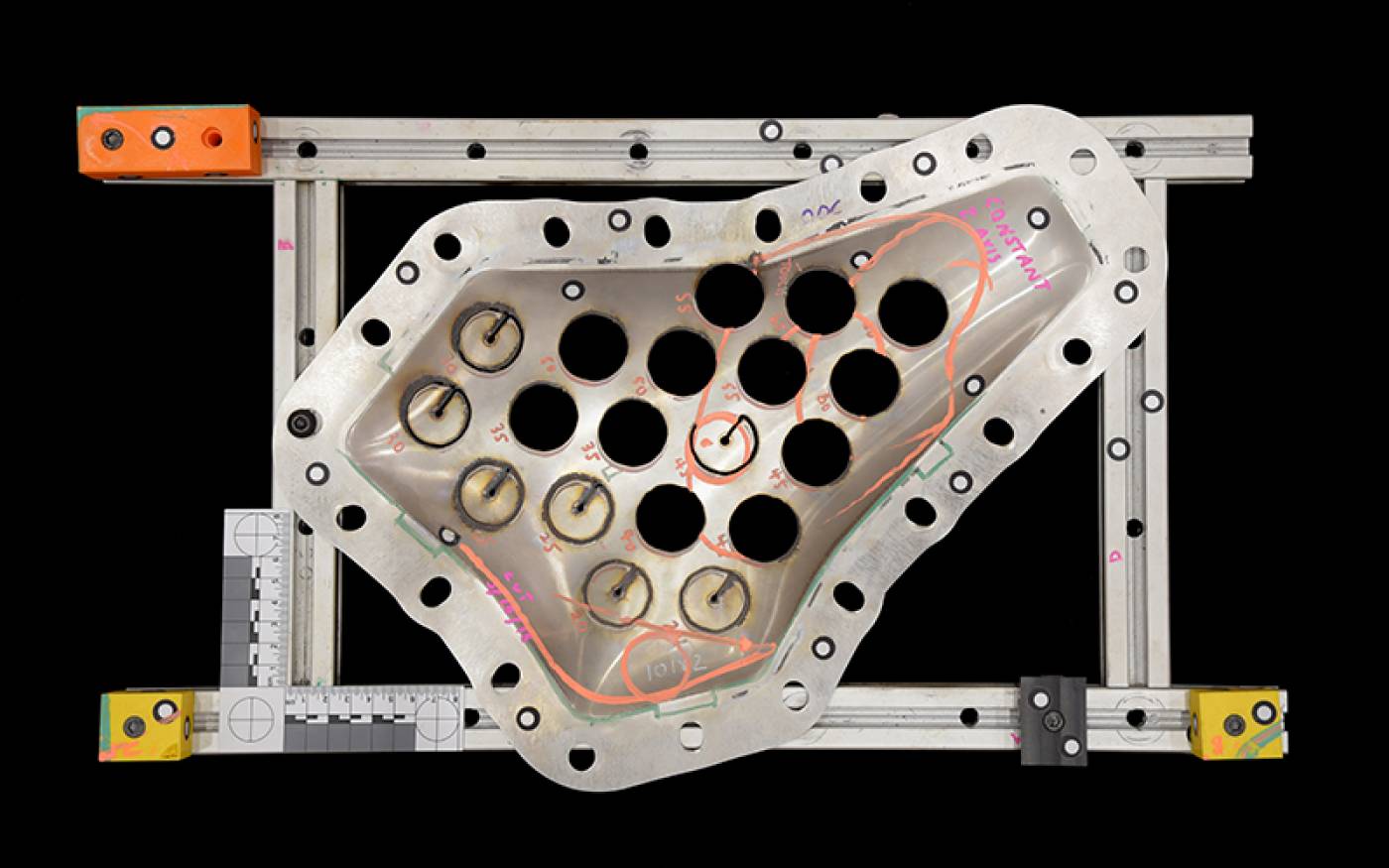
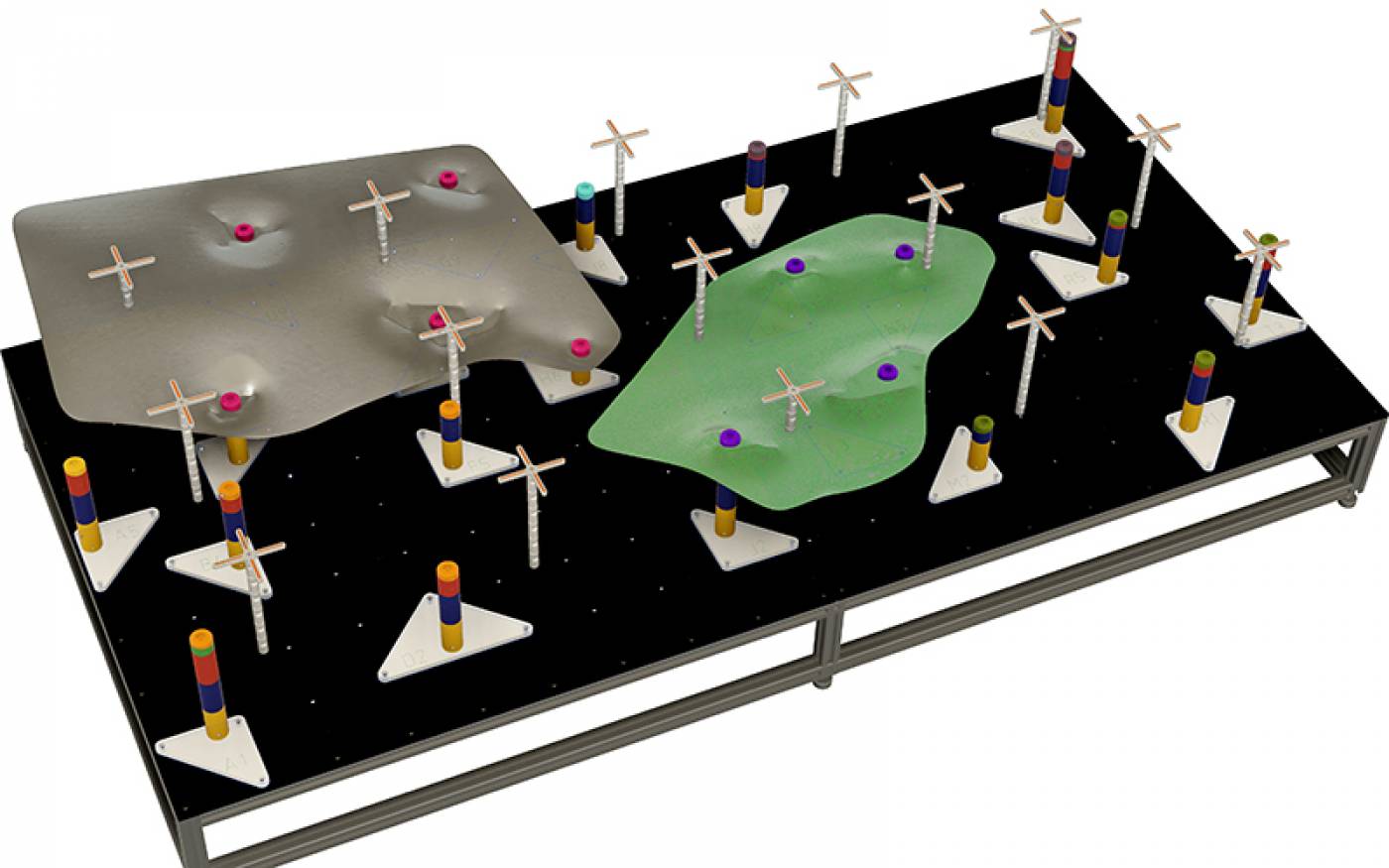
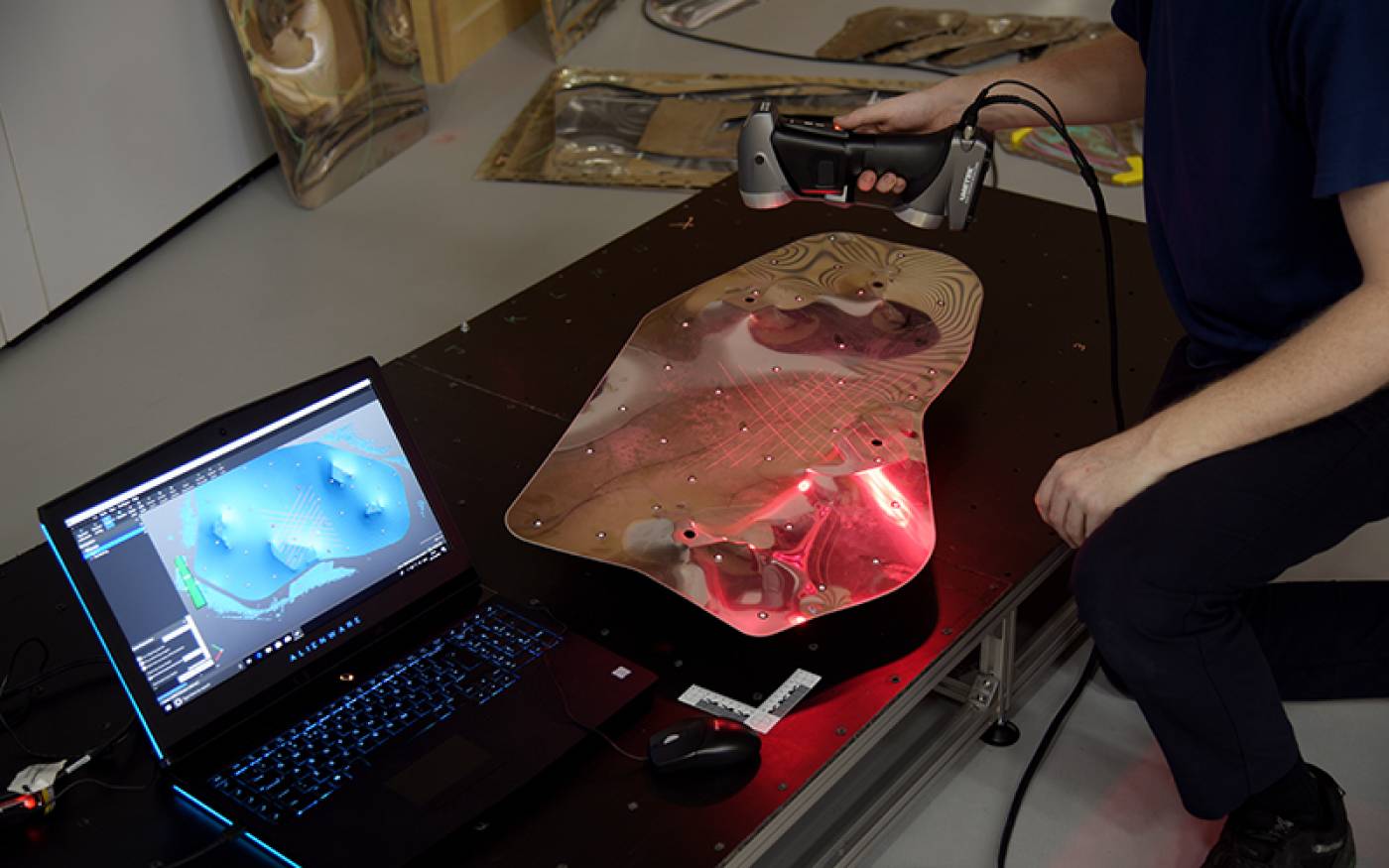
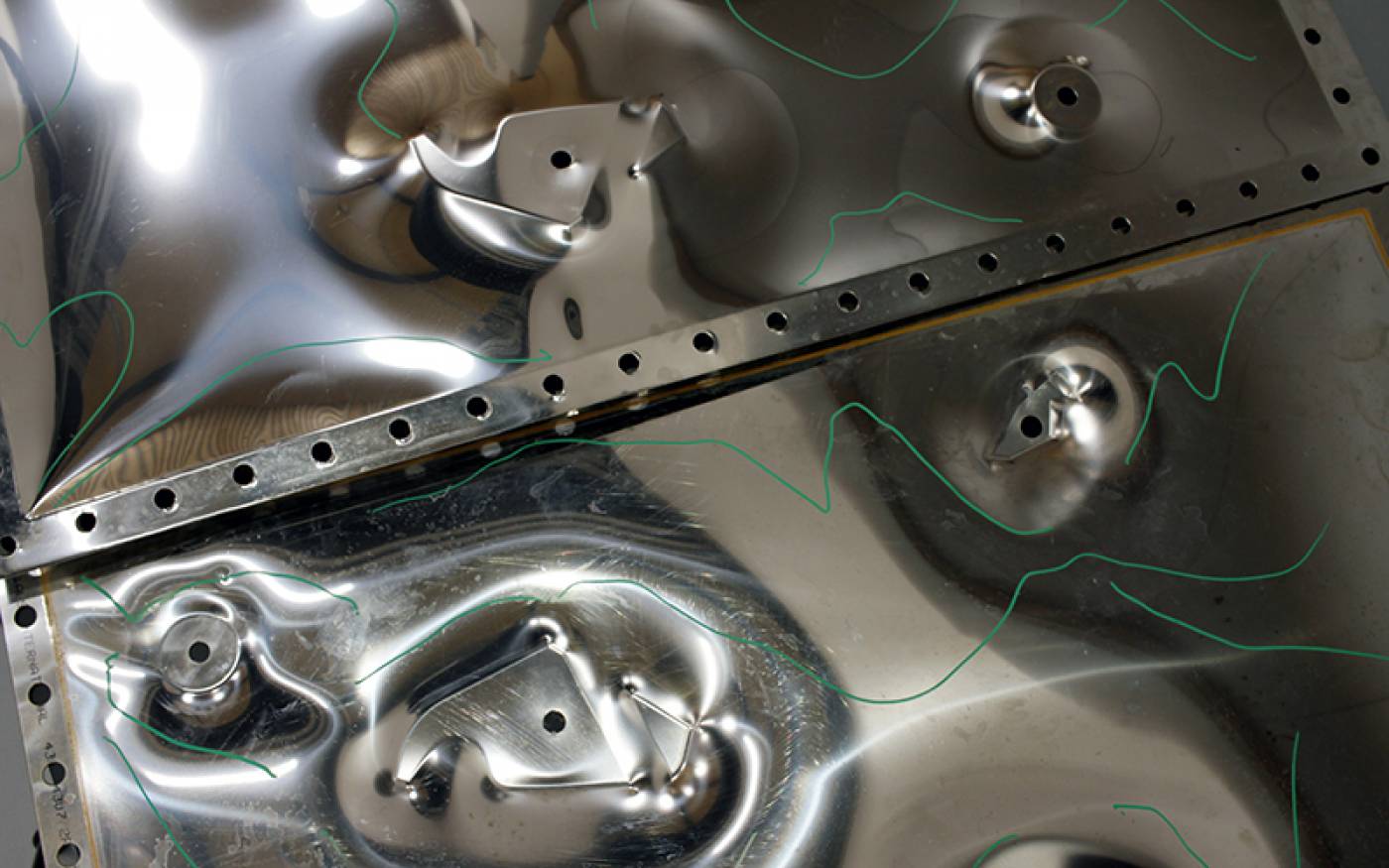

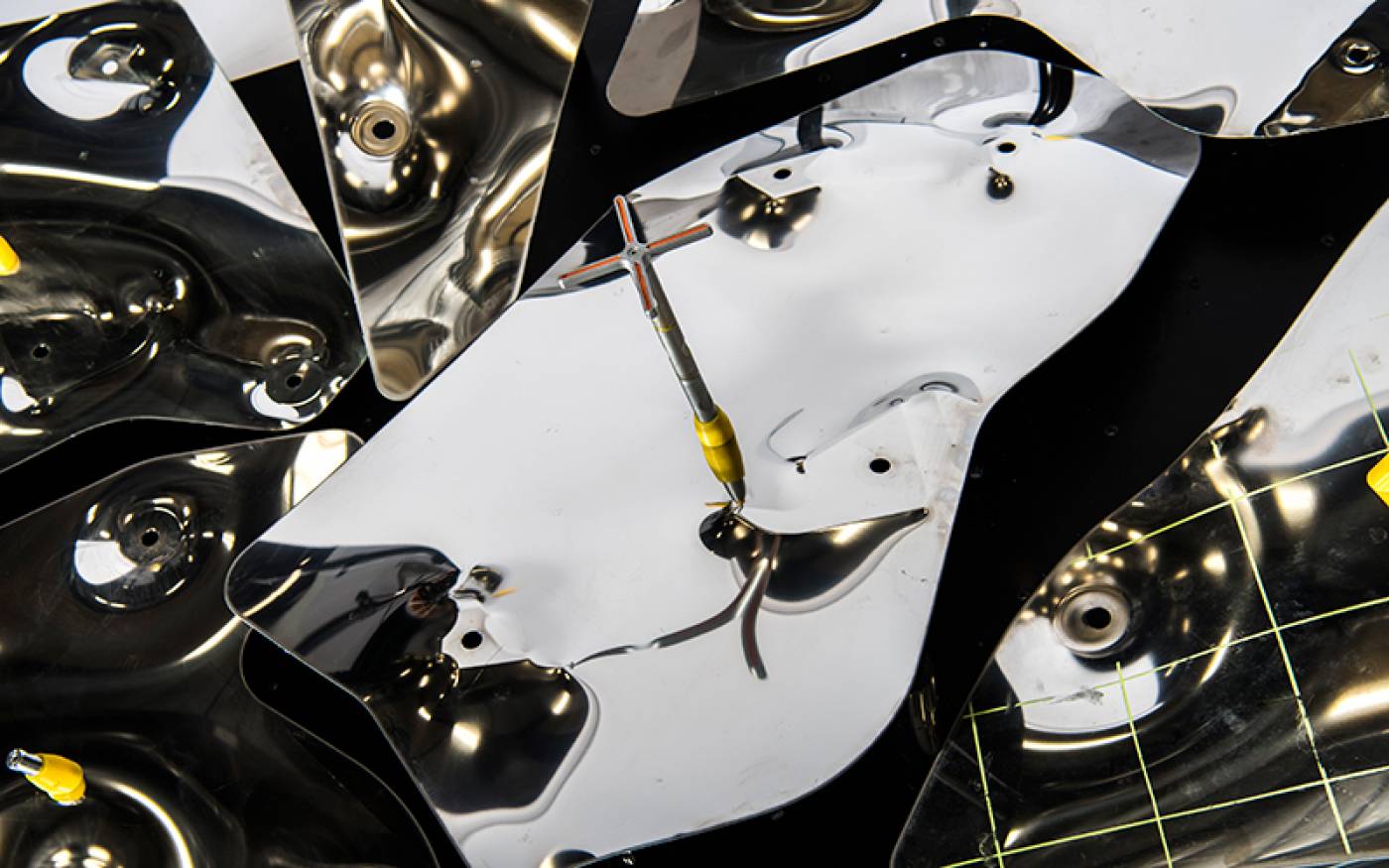
This project explores the relationship between a manufacturing process that produces a formed surface with a significant degree of uncertainty and non-repeatability and how it joins and coordinates with precise components, as well as building planning and structural grids.
On the basis that this forming process resists precise a priori modelling using digital tools, the approach adopted in this project has been to use the forming process itself to establish datums and points of coordination through digital scanning. A 1000x2000mm base with a regular grid of holes provides a datum from which a grid and planes are projected.
Through hydroforming grade 304 stainless steel sheets with a 2R bright annealed finish of 1000 x 665 x 0.5mm thickness under pressures of (150 to 300) P.S.I., a range of free-form surfaces have been produced with small areas of precisely formed regions around CNC milled moulded blocks. The resulting ‘sloppy topology’ is laser-scanned at high-resolution to allow bespoke brackets and junctions to be precisely modelled and 3D printed, to compensate for the underlying geometric uncertainty.
A range of fabrication processes were investigated for processing the sloppy topology including robotically plasma-cutting over the scanned surface, as well as lathe turning and CNC milling bespoke joints and stand-off components.
 Close
Close

